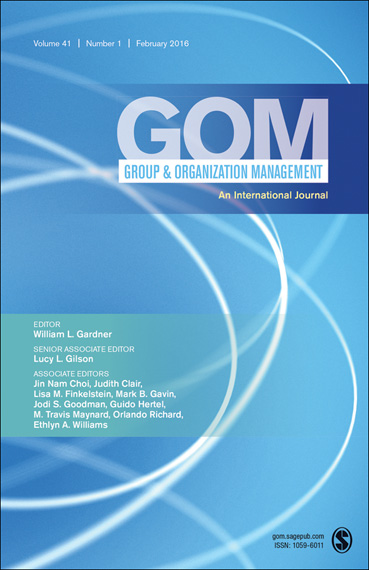The Positive Collective: The Impact of Positivity on Team Performance
We’re pleased to welcome Nale Lehmann-Willenbrock. Nale recently published an article in Group & Organization Management entitled “Understanding Positivity Within Dynamic Team Interactions: A Statistical Discourse Analysis” with co-authors Ming Ming Chiu, Zhike Lei, and Simone Kauffeld.
The abstract for the paper:
Positivity has been heralded for its individual benefits. However, how positivity dynamically unfolds within the temporal flow of team interactions remains unclear. This is an important oversight, as positivity can be key to team problem solving and performance. In this study, we examine how team micro-processes affect the likelihood of positivity occurring within dynamic team interactions. In doing so, we build on and expand previous work on individual positivity and integrate theory on temporal team processes, interaction rituals, and team problem solving. We analyze 43,139 utterances during the meetings of 43 problem-solving teams in two organizations. First, we find that the observed overall frequency of positivity behavior in a team is positively related to managerial ratings of team performance. Second, using statistical discourse analysis, we show that solution-focused behavior and previous positivity within the team interaction process increase the likelihood of subsequent positivity expressions, whereas positivity is less likely after problem-focused behavior. Dynamic speaker switches moderate these effects, such that interaction instances involving more speakers increase the facilitating effects of solutions and earlier positivity for subsequent positivity within team interactions. We discuss the theoretical and managerial implications of micro-level team positivity and its performance benefits.
What inspired you to be interested in this topic?
Positivity has been studied extensively at the individual level, and studies have shown that having a positive, optimistic outlook has numerous benefits for the individual.
However, when you consider the reality of the workplace, most of us work in some kind of team setting. So this was a research gap: How does positivity emerge in dynamic team interactions, rather than viewing it as an individual experience?
Much of our attitudes and experiences at work are shaped by the social context, in terms of what our co-workers are doing, and in terms of timing. For example, whether or not a team member expresses positivity could depend on the momentary focus of a team conversation (e.g., focusing on problems versus on solutions) and also on the temporal context (e.g., positivity might be more likely later on in a team meeting, when lots of good ideas have been brought to the table).
Moreover, I’m fascinated by the concept of conversation dynamics, or conversation flow: Consider a team meeting where one speaker dominates the discussion, versus a meeting that is truly dynamic. Positivity should be more likely when the team conversation is more dynamic, such that many team members are involved and invested.
In addition to predicting when positivity would emerge within team conversation processes, we were also interested in performance linkages. Given the many individual benefits of being optimistic, we expected that team positivity would also aid team performance.
Were there findings that were surprising to you?
Speaker switches – i.e., how dynamic a team interaction was – played a major role. Speaker switches led to an immediate “boost” in positivity, and they also elevated the effects of other conversation characteristics on positivity (e.g., positivity was more likely after a solution statement particularly when there were lots of speakers involved).
But what I found really astonishing was the fact that team and individual variables (e.g., how much an individual team member talked overall) explained only 8% of the variance in positivity. Instead, the major driving forces of positivity within team interactions were the behaviors preceding each positivity statement. Timing also played an important role (positivity was more likely in later time periods within a meeting).
How do you see this study influencing future research and/or practice?
In terms of research implications, our findings suggests that we really need to study the micro-level dynamics of behaviors in teams. Studies that focus on the individual or team level will likely miss out on most of the variance in subtle team behaviors such as positivity.
In line with several calls for more dynamic team research, our findings emphasize the need to include a temporal perspective. Innovative methods such as Statistical Discourse Analysis, which we applied in this study, can help us address this need.
Our finding that overall positivity was meaningfully linked to team performance has managerial implications. Team leaders should pay attention and actively encourage positivity in team interactions, as these behaviors help implement ideas and move the team forward.

































































































